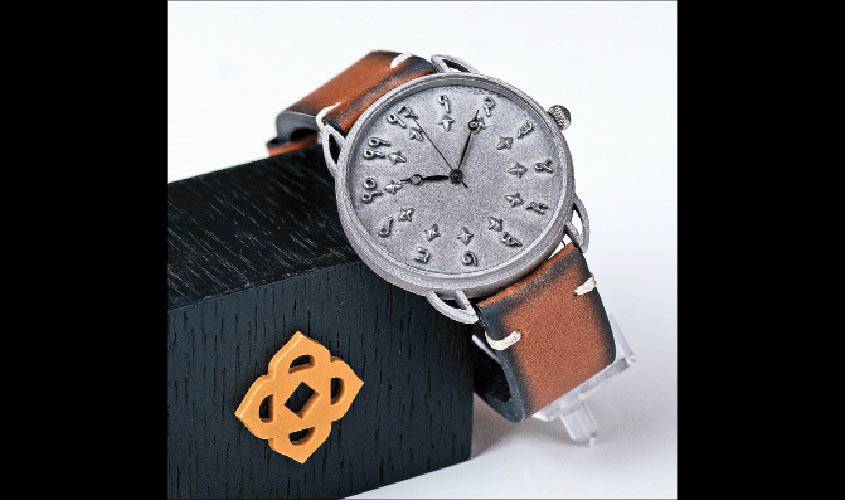The Jaipur Watch Company (JWC) recently launched a collection of India’s first 3D-printed watches. This is the first time a premium watch brand in this country has made use of 3D-printing technology, which is likely to revolutionise manufacturing in the years to come.
The luxury watchmaker is using stainless steel to 3D print its latest line of watches. The technology is simple enough: you feed the design of whatever you want printed into a computer, fill the printer with raw material, and the object is “printed out” layer by layer. But 3D printing technology is far from cost-effective, because good printers are still expensive. In the past, a few Swiss luxury watch brands have started manufacturing 3D-printed watches. The JWC’s recent line heralds the arrival of this manufacturing model into the Indian watch market.
Apart from their unique manufacturing concept, there are other features that make JWC’s timepieces stand out. For instance, their dials, which are decorated with 3D-printed motifs and numbers. Also, there are sapphire crystals adorning the watches and lending them a premium look.
The brand has powered these watches using a system called the Japanese Miyota mechanical movement 9015, which is popular among luxury watchmakers around the world. High quality is also reflected in the genuine handcrafted leather straps of JWC’s 3D-printed line.
Gaurav Mehta, founder and CEO, Jaipur Watch Company, spoke to Guardian 20 about using 3D-printing technology for the brand’s timepieces. “Our brand is renowned for its creativity, and this time we wanted to create a unique concept of which the Indian watch market was completely unaware. We chose to 3D print the watch because it was the only way to achieve the result we wanted. In the 1990s, 3D printing techniques were considered suitable only for the production of functional or aesthetic prototypes. Today, the precision, repeatability and material range have increased to the point that 3D printing is considered as an industrial production technology,” he said.
Mehta told us that it was challenging and expensive to incorporate this technology at their company’s manufacturing plant in Bangalore, without which his dream project couldn’t have seen the light of day.
While 3D-printed watches have their own charm and making them requires lesser time, it is cumbersome to mass manufacture them. Mehta said, “3D printing is a cost effective method to create only a few watches, and of different models. You need to avoid using mass manufacturing processes. We had to create and work upon a lot of designs initially as we were completely new to this technology. There was something to learn at every step.”
For the brand, bringing in this new technology doesn’t mean moving away from their heritage. The Jaipur Watch Company is recognised as India’s only bespoke watchmaker that started out, in 2013, by making watches that contained real pre-British era coins on their dials. This custom-made feature
For the makers, customising a luxury watch is an art and they look for manufacturing processes which allow them to create on-demand designs. So watch connoisseurs can approach with monograms, motifs and coins they’d like embedded into their timepieces. They can also get the watch backs monogrammed with texts and engravings.
But the question remains: what are the advantages of 3D printing a watch? According to Mehta, it provides an opportunity to work with a faster manufacturing system and developing the product quickly and with ease. “Speed and control are the main benefits of incorporating this technology into the R&D process. But for us, the main advantage of using 3D printing for our watches is simply freedom. Not only does this manufacturing method offer a lot of freedom during the creative process, but also during the production. It can be used for rapid prototyping, hence it is also an adequate solution for production. It offers opportunities to create new shapes. Impressive designs can be created just in one part of the watch. There is also a possibility to redo the model and reprint a new version while prototyping, which impossible with manufacturing methods such as injection moulding, which has been in use for long,” said Mehta.
The range of JWC’s 3D-printed watches begins at Rs 65,000. This collection is retailing via all Tijori stores at Oberoi hotels across India. The watches can also be ordered online on the website, www.jaipurwatches.com. The brand is also planning to open their first flagship store at Select City Walk in Delhi in the next couple of months.

